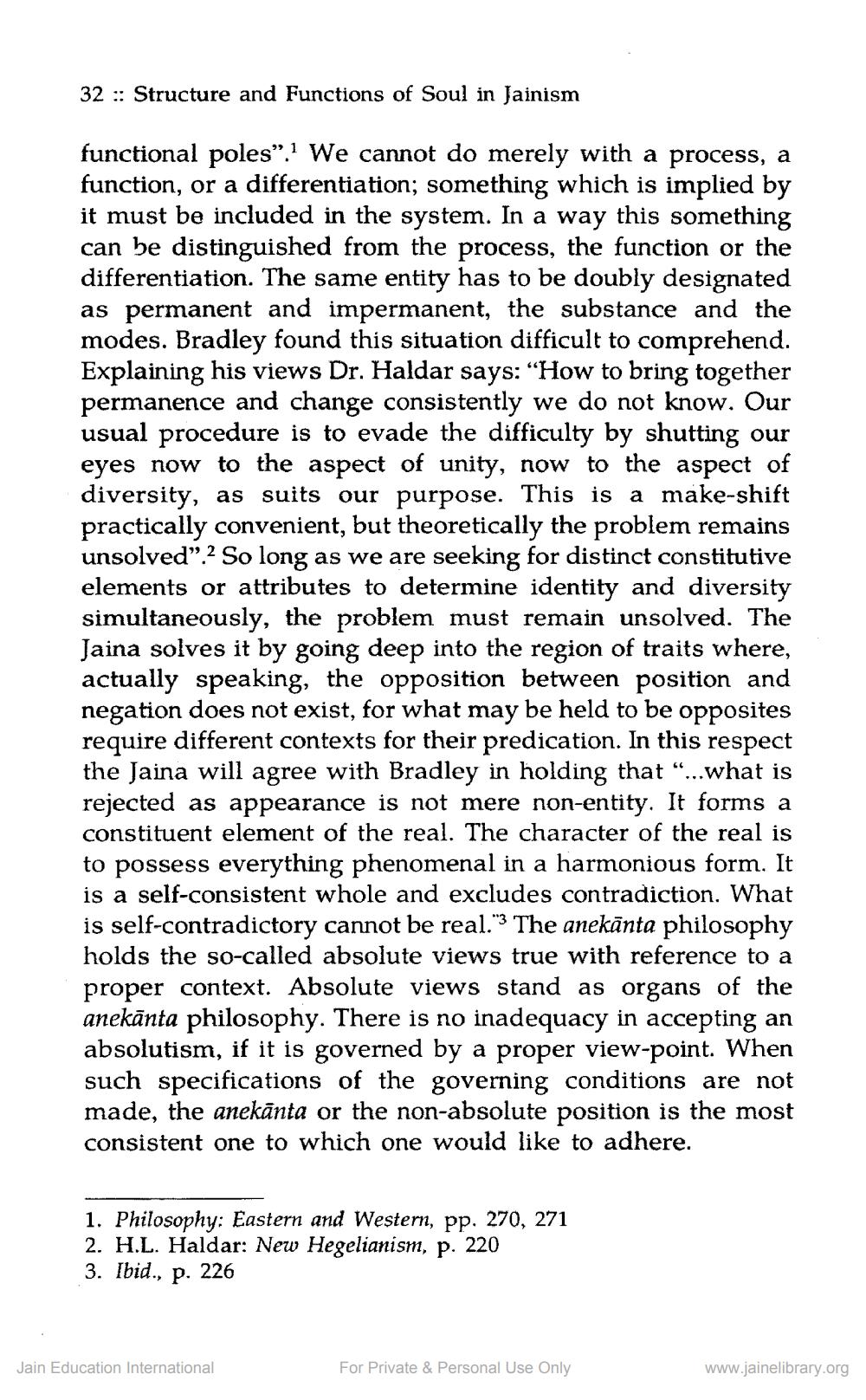________________
32: Structure and Functions of Soul in Jainism
functional poles". We cannot do merely with a process, a function, or a differentiation; something which is implied by it must be included in the system. In a way this something can be distinguished from the process, the function or the differentiation. The same entity has to be doubly designated as permanent and impermanent, the substance and the modes. Bradley found this situation difficult to comprehend. Explaining his views Dr. Haldar says: "How to bring together permanence and change consistently we do not know. Our usual procedure is to evade the difficulty by shutting our eyes now to the aspect of unity, now to the aspect of diversity, as suits our purpose. This is a make-shift practically convenient, but theoretically the problem remains unsolved".? So long as we are seeking for distinct constitutive elements or attributes to determine identity and diversity simultaneously, the problem must remain unsolved. The Jaina solves it by going deep into the region of traits where, actually speaking, the opposition between position and negation does not exist, for what may be held to be opposites require different contexts for their predication. In this respect the Jaina will agree with Bradley in holding that "...what is rejected as appearance is not mere non-entity. It forms a constituent element of the real. The character of the real is to possess everything phenomenal in a harmonious form. It is a self-consistent whole and excludes contradiction. What is self-contradictory cannot be real." The anekānta philosophy holds the so-called absolute views true with reference to a proper context. Absolute views stand as organs of the anekānta philosophy. There is no inadequacy in accepting an absolutism, if it is governed by a proper view-point. When such specifications of the governing conditions are not made, the anekānta or the non-absolute position is the most consistent one to which one would like to adhere.
1. Philosophy: Eastern and Western, pp. 270, 271
2. H.L. Haldar: New Hegelianism, p. 220 3. Ibid., P. 226
Jain Education International
For Private & Personal Use Only
www.jainelibrary.org




